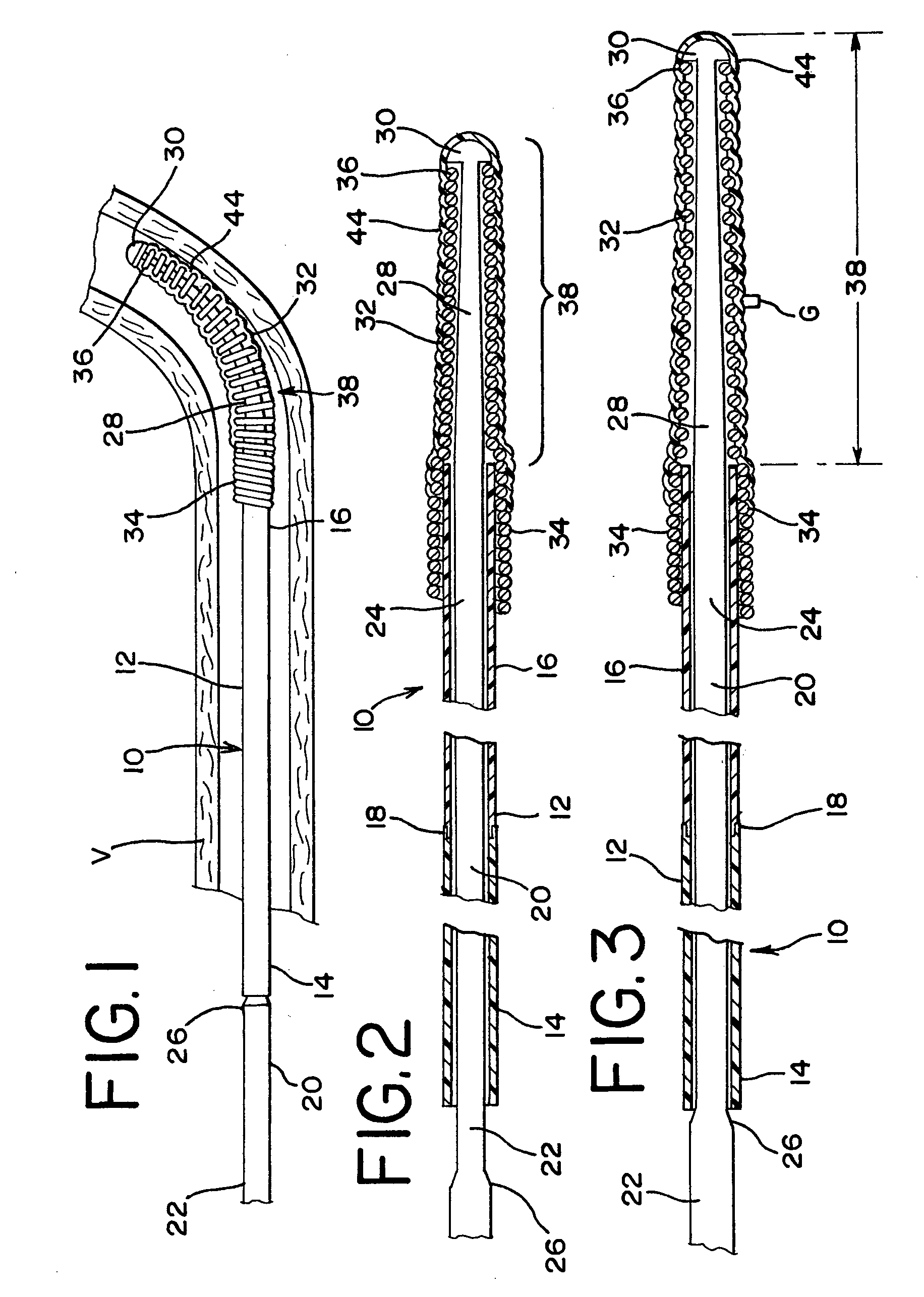Variable stiffness guidewire
a guidewire and variable stiffness technology, applied in the field of guidewires, can solve the problems of insufficient rigidity of procedures, inability to obviate the need, and the catheter cannot be used to define its own path through the vasculature, etc., and achieve the effect of improving navigability through tortuous body vessels and being sufficiently rigid
- Summary
- Abstract
- Description
- Claims
- Application Information
AI Technical Summary
Benefits of technology
Problems solved by technology
Method used
Image
Examples
Embodiment Construction
[0021] As required, detailed embodiments of the present invention are disclosed herein; however, it is to be understood that the disclosed embodiments are merely exemplary of the invention, which may be embodied in various forms. Therefore, specific details disclosed herein are not to be interpreted as limiting, but merely as a basis for the claims and as a representative basis for teaching one skilled in the art to variously employ the present invention in virtually any appropriate manner.
[0022]FIG. 1 illustrates a guidewire 10 in a body vessel V. The guidewire 10 includes a hypotube or tube 12 with a proximal portion 14 and a distal portion 16, which are best shown in FIGS. 2 and 3. The proximal portion 14 and distal portion 16 are made of different materials, typically being separate tubes that are joined at joint 18. The respective proximal and distal portions 14 and 16 preferably have substantially equal respective outer and inner diameters at their location of contact, which ...
PUM
 Login to View More
Login to View More Abstract
Description
Claims
Application Information
 Login to View More
Login to View More - R&D
- Intellectual Property
- Life Sciences
- Materials
- Tech Scout
- Unparalleled Data Quality
- Higher Quality Content
- 60% Fewer Hallucinations
Browse by: Latest US Patents, China's latest patents, Technical Efficacy Thesaurus, Application Domain, Technology Topic, Popular Technical Reports.
© 2025 PatSnap. All rights reserved.Legal|Privacy policy|Modern Slavery Act Transparency Statement|Sitemap|About US| Contact US: help@patsnap.com



